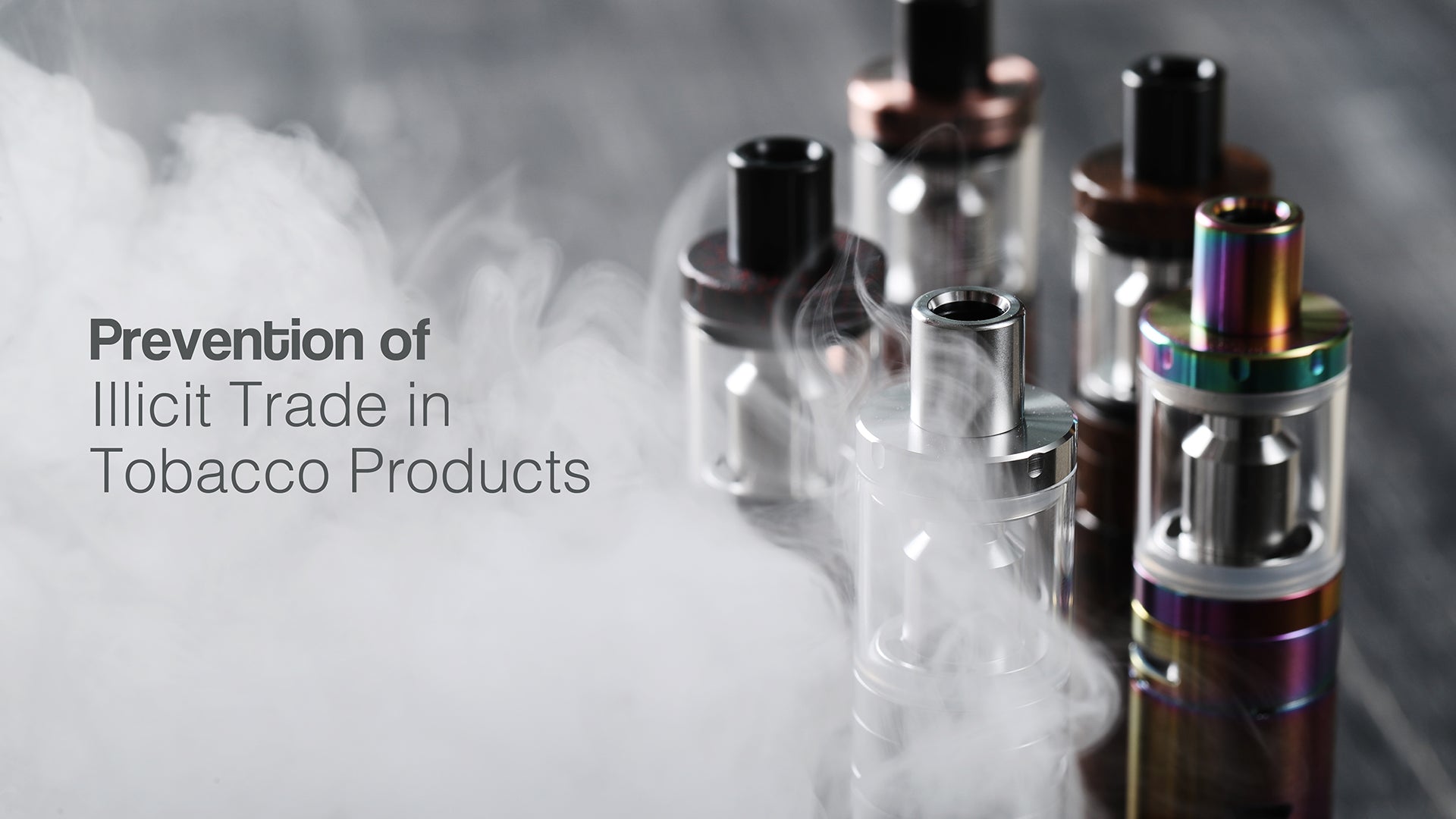Prevention of Illicit Trade in Tobacco Products
With the black market of tobacco products running rampant in the United States, government officials have become more aware of the detrimental effects of tobacco products' illicit trade. Not only have counterfeit vaporizer products resulted in 530 illnesses and 9 deaths, but there are economic consequences that affect the American market as well.
According to the CDC, a staggering 7%-21% of tobacco products in the United States are purchased illegally. Illegal tobacco and vaping products appeal to consumers due to their cheap pricing; however, they often contain harmful chemicals that lower the price of production. The results of illicit tobacco and vaping products are incredibly detrimental to the user.
The FDA has worked tirelessly to prevent black-market vaping products, but it's a brutal fight. To curb the negative repercussions of illicit trade, state, local, and tribal jurisdictions have to work together. Without each jurisdiction working together, illegal disposable tobacco products and vaporizers can easily fall into the hands of consumers. To prevent the illicit trade of tobacco products, officials follow a three-step prevention program:
- State measure
- Track-and-trace
- Educate the public
State Measure
According to the CDC, agents use a three-legged-stool strategy that involves licensing, product markings, and enforcement to limit tobacco products' illicit trade.
Licensing
To sell disposables and vaporizer products legally, retailers must obtain licensing. If rules and regulations aren't followed closely, licenses can be revoked. This produces a sense of accountability throughout retailers and ensures that legal retailers refrain from stocking illicit products.
In recent years, the FDA has gotten more strict with the regulations and guidelines for licensing. In order to get satisfactory licensing, sellers of vaporizers and e-cigarettes must carefully follow these rules as outlined by the FDA:
-
Check photo ID of everyone under age 27 who attempts to purchase e-cigarettes, e-liquids, or other ENDS.
-
Only sell e-cigarettes, e-liquids, and other ENDS to customers 21 and older.1
-
Do NOT sell e-cigarettes, e-liquids, or other ENDS in a vending machine unless in an adult-only facility.2
-
Do NOT give away free samples of e-cigarettes, e-liquids, or other ENDS to consumers, including any of their components or parts.3
-
Do NOT sell or distribute e-cigarettes, e-liquids, or other ENDS without a health warning statement on the package.4, 5
-
Do NOT display advertisements for e-cigarettes, e-liquids, or other ENDS without a health warning statement.4, 5
Product Marking
Product marking authenticates genuine vaporizers to alert authorities of legal products. All but three states comply with product marking and tax stamps.
In order to avoid false product markings, authorities have gotten more sophisticated technologies so they can’t be replicated. According to the CDC, this includes:
- Embedded threads
- Coatings
- Fluorescent inks
- Watermarks
- Holograms and foils
- Magnetic stripes
- Laser coding
- Taggants
The downside to these stamps is the price associated with them. However, they do help consumers identify illicit products while assisting the economy to recover from the sale of illegal vaporizers.
Enforcement
Enforcement of illicit trade in tobacco products can be difficult for the FDA to mandate. With black market vaporizer companies going underground and becoming more agile in their processes, it's more challenging for the FDA to regulate.
Despite this, they have imposed significantly stronger penalties when catching illegal products crossing the border. For example, a shipment estimated at $1.72 million was recently seized by US Customs and Border Protection (CBP). After a thorough inspection, the FDA reported that they were illegal under the Food, Drug, and Cosmetic Act. As a result, the FDA ordered the entire shipment of over 86,000 vapes to be destroyed.
This opens a new era of regulations and enforcement for the illicit trade in vaporizers and tobacco products. Situations such as this prove that the FDA is willing to come down on the illegal market to prove a point, protect the US economy, and maintain the health of American citizens.
Educating the Public
Education is the first step toward change, and government officials have worked tirelessly to educate society on tobacco control. Not only has the government worked to inform consumers about the illicit trade, but education on the health consequences of smoking has gone up significantly in recent decades.
Track-and-Trace
According to the CBC, the track-and-trace system must "verify the quantity produced or imported, verify correct tax payments, track products through the supply chain, trace products back to their sources, and ensure product authenticity." Though the real-time control process is tedious, it provides significant success in the prevention of illicit tobacco products.
For a seamless track-and-trace system, the following information must be included:
- Manufacture date
- Manufacture location
- Intended market
- Product description
- Machine used to manufacture
- Time of manufacture
Conclusion
To boycott the illicit trade of tobacco and vaporizer products, state, local, and tribal jurisdictions must work in conjunction using the three-tier system. It is with enhanced surveillance and more robust regulations that the market will begin to see an improvement. However, with the illicit tobacco and vaporizer trade becoming more underground, law enforcement and the FDA will have to continually improve their techniques and protocols to stay one step ahead of black-market retailers.

